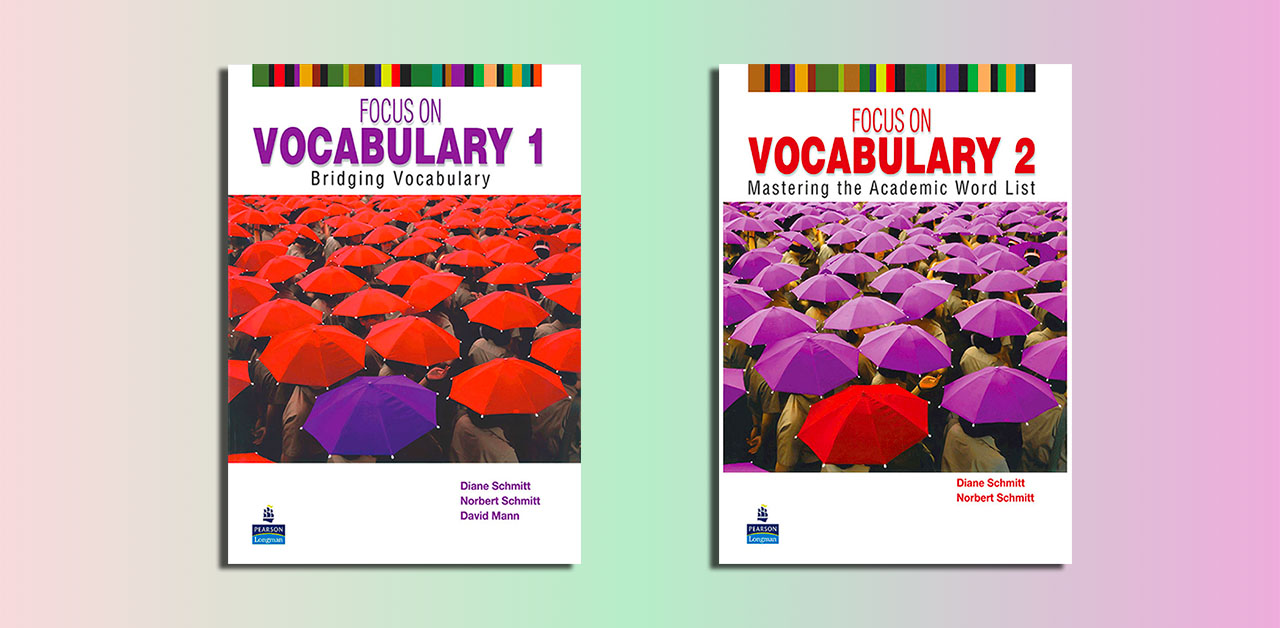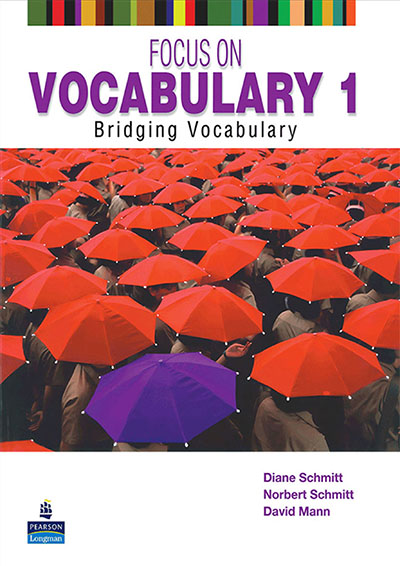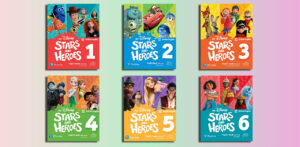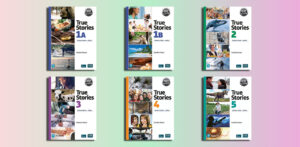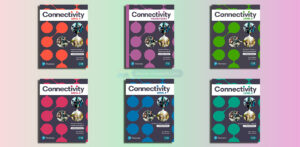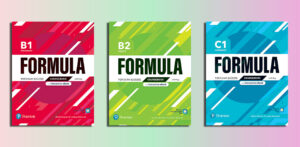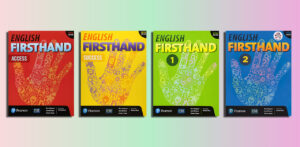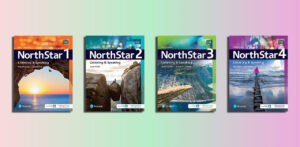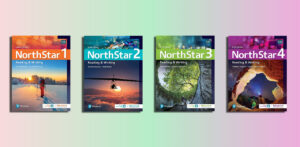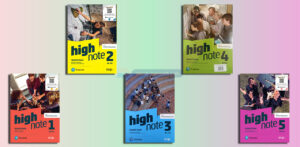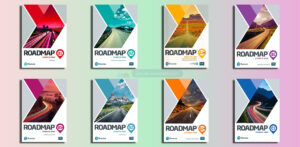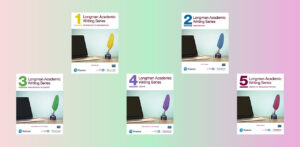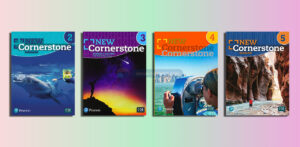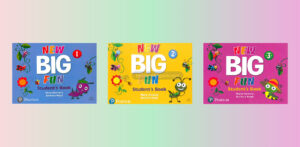Focus on Vocabulary (PDFs)
Focus on Vocabulary 1 Answer Key and Tests.pdf
Focus on Vocabulary 1 Bridging Vocabulary.pdf – Sample: Click
Focus on Vocabulary 2 Answer Key.pdf
Focus on Vocabulary 2 Mastering the Academic Word List.pdf – Sample: Click
| Name | Price | Buy |
|---|---|---|
| Focus on Vocabulary (PDFs) | $5 |
Overview of the “Focus on Vocabulary” by Pearson
Contents
| ✅ Coursebook: | Focus on Vocabulary |
| ✅ Publisher: | Pearson |
| ✅ For: | Adult, Vocabulary |
| ✅ Levels: | B1, B2, C1 |
| ✅ English type: | American English |
| ✅ Publication year: | 2011 |
The Focus on Vocabulary series by Pearson is a research-based, two-level vocabulary textbook series designed to enhance English language learners’ vocabulary acquisition, particularly for academic and real-world contexts. It targets intermediate to advanced learners, helping them build a strong foundation in mid-frequency and academic vocabulary essential for success in academic environments, test-taking, and everyday communication. The series is authored by Diane Schmitt, Norbert Schmitt, and David Mann and is published by Pearson Education ESL.
Key Features of the Series
Two Levels:
- Focus on Vocabulary 1: Bridging Vocabulary: Aimed at intermediate to high-intermediate learners, this book focuses on mid-frequency vocabulary (504 word families) commonly found in novels, newspapers, films, and social or workplace settings. It bridges the gap between high-frequency and lower-frequency words.
- Focus on Vocabulary 2: Mastering the Academic Word List: Designed for high-intermediate to advanced learners, this book emphasizes the Academic Word List (AWL), which includes frequently used words in academic texts. It introduces vocabulary critical for academic and test-taking success.
Structure and Content:
- Thematic Units: Each book is organized into seven units covering diverse topics such as happiness, the mind, design, celebrity, the environment, social change, consumer behavior, and more. These units engage learners with relevant and interesting content.
- Assessing Vocabulary Knowledge: Each main chapter begins with an Assessing Your Vocabulary Knowledge section, allowing students to gauge their familiarity with the chapter’s target words. A reassessment at the end tracks progress.
- Recycling Vocabulary: Target words are recycled a minimum of four times per chapter through reading passages and exercises on reading comprehension, word meanings, word families, collocations, and topic expansion. This repetition reinforces retention and understanding.
- Strategy Practice: Each unit concludes with a Strategy Practice chapter offering tips on dictionary use, essay writing, word-knowledge expansion, and other vocabulary-related skills.
- Reading Strategies: New sections in both levels help students identify text structures and synthesize ideas across texts, enhancing comprehension and critical thinking.
Components:
- Print: Available as full or split-edition student books and workbooks. Print books may include a digital component accessible via a scratch-off code.
- Digital: Includes eBooks and online practice platforms like MyEnglishLab or Pearson English Connect, offering interactive activities and progress tracking.
- Answer Keys and Tests: Available free online for both levels to support self-study and classroom use.
Pedagogical Approach:
- The series emphasizes repeated exposure to vocabulary (8–10 exposures per word) to ensure retention, aligning with research on vocabulary acquisition.
- Exercises focus on word meanings, word families, and collocations, with the latter based on the 179-million-word New Longman Corpus for authentic usage.
- Excerpts from popular and academic materials make learning engaging and relevant to real-world contexts.
- The series encourages critical thinking, academic development, and practical application through activities like writing, discussion, and reading comprehension.
Conclusion
The Focus on Vocabulary series by Pearson is a comprehensive, research-based resource for intermediate to advanced English learners aiming to expand their vocabulary for academic, professional, and everyday use. Its structured approach, engaging content, and focus on practical skills make it a valuable tool for both classroom and self-study settings.
Focus on Vocabulary 1 Bridging Vocabulary
Who is suitable for “Focus on Vocabulary”?
The Focus on Vocabulary series by Pearson is suitable for:
Intermediate to Advanced English Language Learners:
- Focus on Vocabulary 1: Ideal for intermediate to high-intermediate learners seeking to master mid-frequency vocabulary used in everyday contexts like novels, newspapers, films, and social or workplace settings.
- Focus on Vocabulary 2: Suited for high-intermediate to advanced learners focusing on academic vocabulary, particularly the Academic Word List (AWL), essential for higher education and standardized tests.
Students Preparing for Academic Settings:
- Those aiming to succeed in college, university, or academic programs where understanding and using academic vocabulary is critical.
- Learners preparing for tests like TOEFL, IELTS, or other exams requiring strong vocabulary skills.
Adult Learners in Non-Credit Literacy Programs:
- Particularly effective for adult learners in continuing education or community-based English programs, as the series is praised for its use in such settings.
Self-Learners:
- Motivated individuals studying independently, as the series includes answer keys (available online) and digital resources like MyEnglishLab for self-paced practice.
Teachers and Educators:
- ESL/EFL instructors looking for structured, research-based materials to teach vocabulary in classroom settings, with engaging readings and exercises.
Professionals and Non-Native Speakers:
- Non-native English speakers in professional or workplace environments who need to improve their vocabulary for better communication in social or work-related contexts.
The series is designed for learners who already have a basic grasp of English and want to expand their vocabulary for practical, academic, or professional purposes. Its thematic content and focus on critical thinking also make it engaging for learners with diverse interests.
Focus on Vocabulary 2 Mastering the Academic Word List
The benefits of “Focus on Vocabulary”
The Focus on Vocabulary series by Pearson offers numerous benefits for English language learners, particularly those at intermediate to advanced levels. Below are the key benefits:
Enhanced Vocabulary Acquisition:
- Builds a strong foundation in mid-frequency (Level 1) and academic vocabulary (Level 2, focusing on the Academic Word List), crucial for everyday communication, academic success, and standardized tests like TOEFL or IELTS.
- Repeated exposure to target words (8–10 times per word) ensures retention, aligning with research on effective vocabulary learning.
Practical and Relevant Content:
- Thematic units cover engaging topics like happiness, the environment, and consumer behavior, making learning relatable and applicable to real-world contexts such as newspapers, novels, films, and workplace settings.
- Excerpts from authentic sources (e.g., popular and academic materials) expose learners to real-life language use.
Improved Academic Skills:
- Strengthens reading comprehension through exercises that teach students to identify text structures and synthesize ideas across texts.
- Develops critical thinking and academic writing skills through activities like essay writing and discussion prompts.
Comprehensive Skill Development:
- Focuses on word meanings, word families, and collocations (based on the 179-million-word New Longman Corpus), helping learners understand and use words in context.
- Includes strategy practice (e.g., dictionary use, word-knowledge expansion) to build lifelong vocabulary-learning skills.
Engaging and Motivating Format:
- Interactive exercises and diverse activities cater to various learning styles, keeping learners motivated.
- Assessing Your Vocabulary Knowledge sections at the start and end of chapters allow students to track progress, boosting confidence.
Flexible Learning Options:
- Available in print, eBook, and digital formats (e.g., MyEnglishLab, Pearson English Connect), supporting both classroom and self-study.
- Online answer keys and tests facilitate independent learning and classroom assessment.
Versatility for Diverse Learners:
- Suitable for intermediate to advanced learners, including adult learners in non-credit literacy programs, self-studiers, and professionals needing better English communication.
- Prepares learners for academic, professional, and social settings by covering vocabulary relevant to multiple contexts.
Proven Effectiveness:
- Praised by learners and educators for its clear structure, engaging readings, and effectiveness in improving vocabulary, particularly in academic and test-preparation contexts.
In summary, Focus on Vocabulary equips learners with the tools to expand their vocabulary, enhance academic and professional communication, and build confidence through structured, engaging, and research-based content.
Effective learning strategies for “Focus on Vocabulary”
To maximize the benefits of the Focus on Vocabulary series by Pearson, learners can employ the following effective learning strategies tailored to its structure and content:
Leverage the Assessing Your Vocabulary Knowledge Sections:
- Strategy: Start each chapter by completing the Assessing Your Vocabulary Knowledge section to gauge your familiarity with target words. Reassess at the end to track progress.
- Why It Works: This helps identify strengths and gaps, focusing your study on unfamiliar words and reinforcing retention through self-assessment.
Engage Actively with Thematic Readings:
- Strategy: Read the thematic passages (e.g., on happiness, the environment) actively by highlighting target words, annotating meanings, and summarizing main ideas in your own words.
- Why It Works: Active reading enhances comprehension and contextual understanding, as the series uses authentic excerpts to present vocabulary in real-world contexts.
Practice Spaced Repetition:
- Strategy: Review target words multiple times over increasing intervals (e.g., 1 day, 3 days, 1 week) using flashcards or apps like Anki, incorporating words from the book’s word lists, word families, and collocations.
- Why It Works: The series emphasizes 8–10 exposures per word for retention, and spaced repetition aligns with this research-based approach to strengthen long-term memory.
Focus on Collocations and Word Families:
- Strategy: Create personal examples or sentences using the collocations and word families provided in exercises (based on the New Longman Corpus). For example, if learning “analyze,” practice related forms like “analysis” or “analytical” in different contexts.
- Why It Works: Understanding how words combine and transform deepens usage knowledge, making vocabulary more versatile for academic and professional settings.
Use the Strategy Practice Chapters:
- Strategy: Apply the skills taught in the Strategy Practice sections (e.g., dictionary use, essay writing, expanding word knowledge) in real-world tasks, such as writing short essays or researching synonyms for target words.
- Why It Works: These sections build transferable skills, helping learners become independent in expanding their vocabulary beyond the textbook.
Incorporate Digital Resources:
- Strategy: Use MyEnglishLab or Pearson English Connect for interactive exercises, progress tracking, and additional practice with target words. Supplement with online dictionaries to explore word usage further.
- Why It Works: Digital platforms provide immediate feedback and varied practice, reinforcing vocabulary through interactive formats.
Engage in Group Discussions or Peer Learning:
- Strategy: Form study groups to discuss thematic unit topics or role-play scenarios using target words. For example, debate a topic like “consumer behavior” using vocabulary from the chapter.
- Why It Works: Verbal practice reinforces word usage and builds confidence, aligning with the series’ emphasis on practical application.
Apply Vocabulary in Writing and Speaking:
- Strategy: Write short paragraphs or journal entries incorporating target words, or practice speaking them in mock academic or professional scenarios (e.g., presentations, workplace discussions).
- Why It Works: Active production of vocabulary in context strengthens recall and prepares learners for real-life use, a key goal of the series.
Synthesize Ideas Across Texts:
- Strategy: Use the reading strategy exercises to practice synthesizing ideas from multiple texts within a unit. Create mind maps or charts to connect key concepts and vocabulary.
- Why It Works: The series emphasizes synthesizing skills, which improve critical thinking and help learners see how vocabulary applies across contexts.
Set Specific Goals and Track Progress:
- Strategy: Set weekly goals (e.g., master 10–15 words per chapter) and use the book’s answer keys or online tests to monitor improvement. Reflect on how newly learned words appear in other media (e.g., news, podcasts).
- Why It Works: Goal-setting and progress tracking maintain motivation and align with the series’ structured approach to vocabulary acquisition.
Tips for Success
- Consistency: Study a little each day (e.g., one chapter section) to maintain steady progress, as the series is designed for cumulative learning.
- Contextual Learning: Relate vocabulary to personal interests or goals (e.g., academic study, career) to make it more memorable.
- Review Regularly: Revisit earlier chapters to reinforce older vocabulary, as the series recycles words within units to aid retention.
By combining these strategies with the structured content of Focus on Vocabulary, learners can effectively build and retain a robust vocabulary for academic, professional, and everyday communication.
Effective teaching strategies for “Focus on Vocabulary”
Teaching the Focus on Vocabulary series by Pearson effectively requires strategies that align with its research-based structure, thematic content, and focus on mid-frequency and academic vocabulary. Below are effective teaching strategies for educators using this series in ESL/EFL classrooms or adult literacy programs:
Utilize Pre- and Post-Assessment Activities:
- Strategy: Begin each chapter with the Assessing Your Vocabulary Knowledge section to gauge students’ baseline familiarity with target words. Use the post-assessment at the chapter’s end to measure progress and discuss improvements.
- How to Implement: Have students complete assessments individually, then discuss results in pairs or small groups to identify common challenges and set goals.
- Why It Works: This leverages the series’ built-in assessment tools to personalize learning and motivate students by showing tangible progress.
Incorporate Collaborative Learning:
- Strategy: Organize group activities, such as jigsaw readings or discussions, where students teach each other target words from the thematic units (e.g., happiness, the environment). Assign roles like “vocabulary expert” or “discussion leader.”
- How to Implement: Divide readings among groups, with each group presenting key vocabulary and concepts to the class, reinforcing collocations and word families.
- Why It Works: Collaborative tasks promote active engagement and align with the series’ emphasis on contextual vocabulary use.
Facilitate Contextual and Authentic Use:
- Strategy: Encourage students to use target words in authentic contexts by creating role-plays, debates, or presentations based on unit themes (e.g., consumer behavior, social change).
- How to Implement: Assign tasks like writing a short essay or delivering a 2-minute speech using 5–10 target words from the chapter. Provide feedback on word usage and collocations.
- Why It Works: The series uses authentic excerpts, and applying vocabulary in real-life scenarios reinforces retention and practical application.
Teach Vocabulary Through Spaced Repetition:
- Strategy: Design activities that revisit target words over multiple sessions (e.g., weekly quizzes, word walls, or games like vocabulary bingo).
- How to Implement: Create a class word bank where students add target words, collocations, and example sentences, reviewing them periodically. Use flashcards or digital tools like Quizlet for reinforcement.
- Why It Works: The series emphasizes 8–10 exposures per word, and spaced repetition supports long-term retention.
Integrate Digital Resources for Interactive Learning:
- Strategy: Use MyEnglishLab or Pearson English Connect to assign interactive exercises, track student progress, and provide instant feedback.
- How to Implement: Assign online tasks as homework to complement in-class activities, and review analytics to identify areas where students need extra support.
- Why It Works: Digital platforms enhance engagement and provide varied practice, aligning with the series’ digital components.
Focus on Collocations and Word Families:
- Strategy: Teach collocations and word families explicitly by creating activities like matching exercises, gap-fills, or sentence-building tasks using examples from the New Longman Corpus provided in the book.
- How to Implement: Have students create “word webs” for a target word (e.g., “analyze” → “analysis,” “analytical,” “analytically”) and use them in sentences. Discuss common collocations (e.g., “conduct an analysis”).
- Why It Works: The series emphasizes these aspects for deeper vocabulary understanding, improving fluency and accuracy.
Incorporate Strategy Practice Sections:
- Strategy: Dedicate class time to the Strategy Practice chapters, teaching skills like dictionary use, essay writing, or expanding word knowledge through hands-on activities.
- How to Implement: Conduct mini-workshops where students practice using online dictionaries or write short essays incorporating target words, followed by peer reviews.
- Why It Works: These sections build lifelong vocabulary-learning skills, aligning with the series’ goal of fostering independent learners.
Promote Critical Thinking and Synthesis:
- Strategy: Use the series’ reading strategy exercises to teach students how to identify text structures and synthesize ideas across texts.
- How to Implement: Assign tasks like comparing two unit texts on similar themes, creating Venn diagrams, or writing summaries that integrate target vocabulary.
- Why It Works: The series emphasizes critical thinking, preparing students for academic tasks and deeper comprehension.
Gamify Vocabulary Learning:
- Strategy: Introduce games like vocabulary charades, word association, or “Find the Word” scavenger hunts using chapter vocabulary.
- How to Implement: Divide the class into teams, assigning points for correct usage of target words in games or quick-fire quizzes. Incorporate themes from the units to keep activities relevant.
- Why It Works: Games increase engagement and motivation, reinforcing vocabulary in a fun, low-pressure environment.
Differentiate Instruction for Diverse Learners:
- Strategy: Tailor activities to accommodate varying proficiency levels (e.g., intermediate for Level 1, advanced for Level 2) by providing scaffolded tasks or extension activities.
- How to Implement: For struggling learners, simplify tasks (e.g., focus on fewer words); for advanced learners, assign creative tasks like writing a blog post using target vocabulary. Use pair work to mix proficiency levels.
- Why It Works: The series is designed for intermediate to advanced learners, and differentiation ensures all students are challenged appropriately.
Additional Tips
- Set Clear Objectives: Align lessons with unit goals (e.g., mastering 10–15 words per chapter) and share these with students to maintain focus.
- Use Real-World Connections: Relate unit themes to students’ lives or current events to make vocabulary relevant (e.g., discuss environmental issues using target words).
- Provide Regular Feedback: Use the book’s answer keys and tests to give constructive feedback on vocabulary use, reinforcing correct application.
- Encourage Reflection: Have students journal about how they’ve used new words outside class, fostering awareness of their progress.
By integrating these strategies, teachers can maximize the effectiveness of Focus on Vocabulary, helping students build a robust vocabulary for academic, professional, and everyday contexts while maintaining engagement and fostering independent learning skills.


